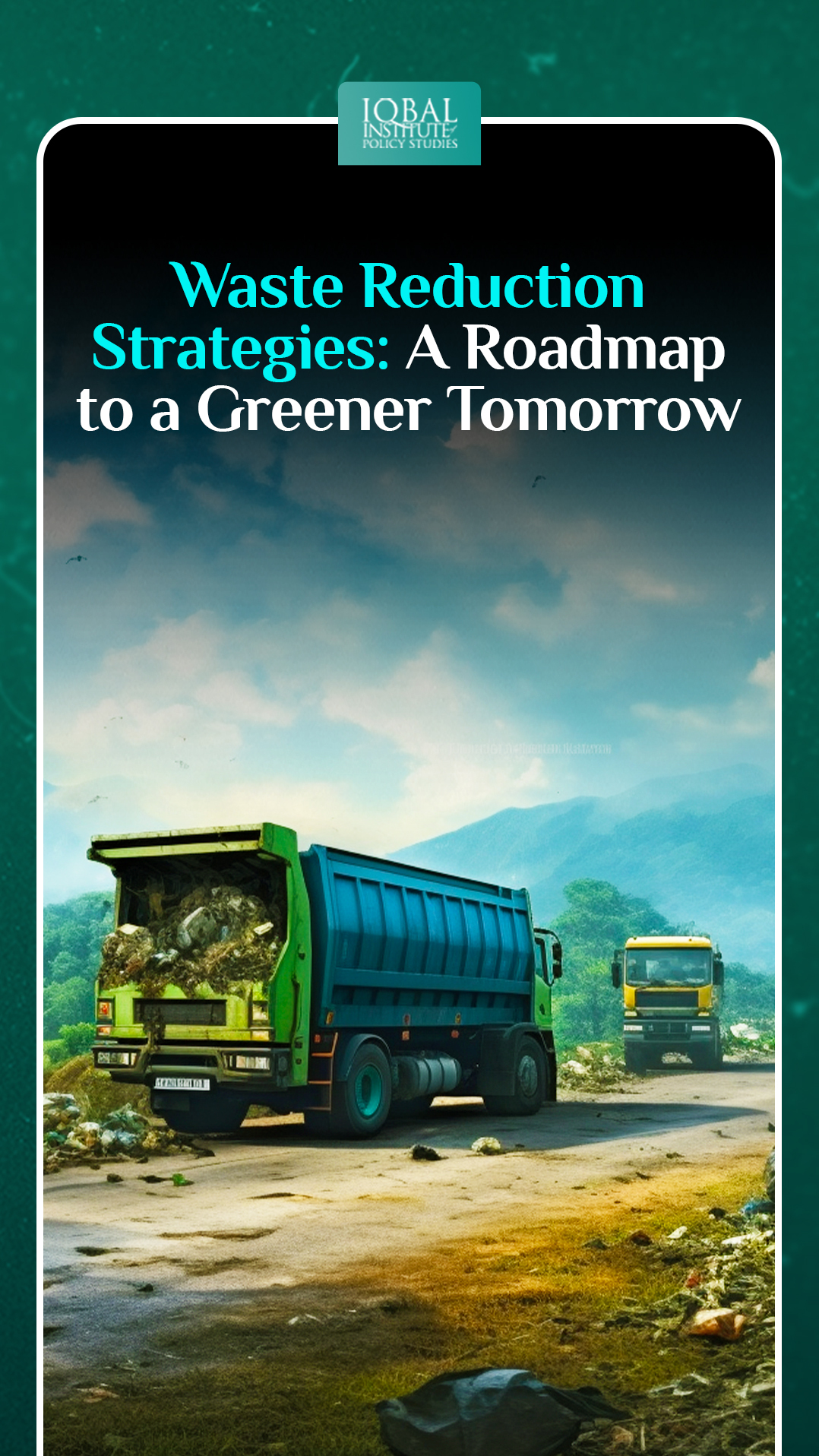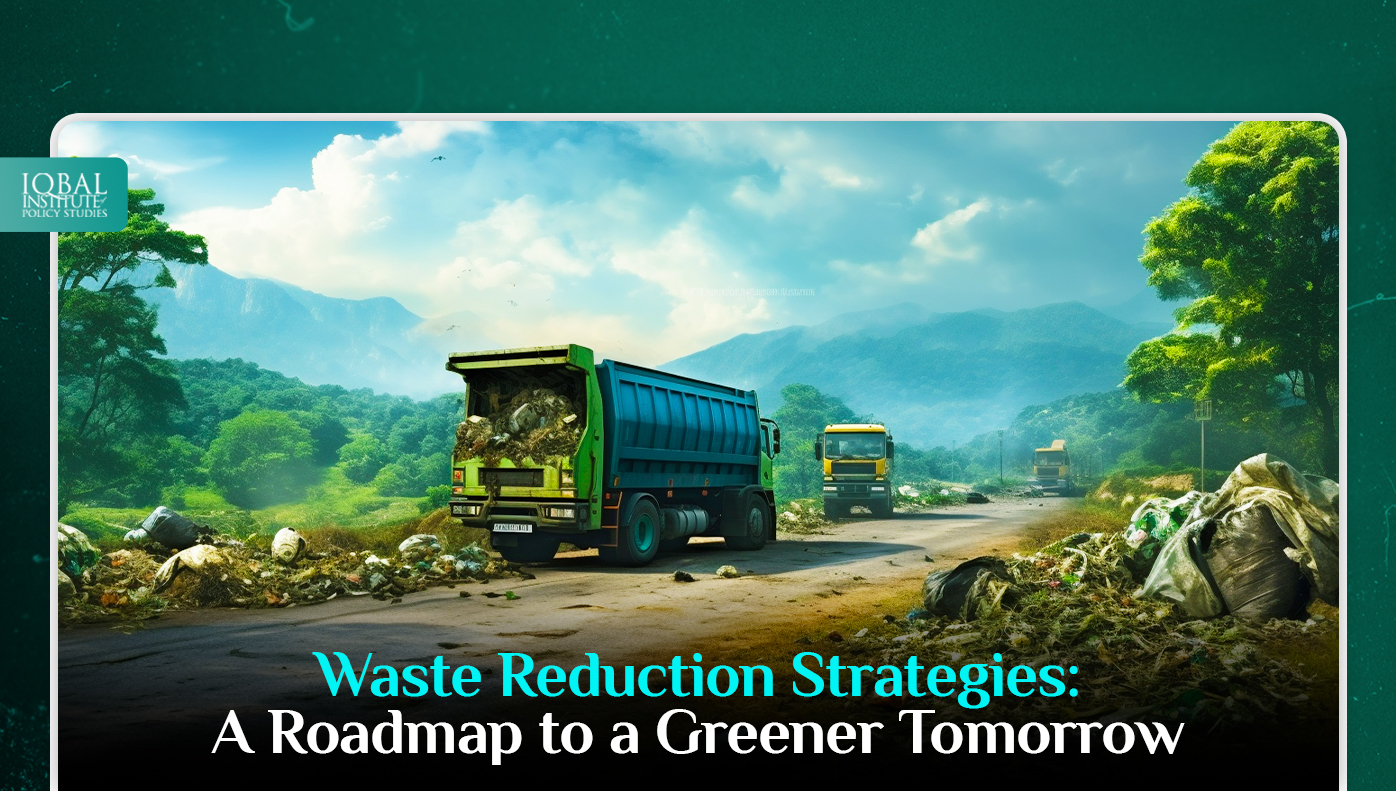Waste reduction is becoming an increasingly critical worldwide concern. The unchecked generation of waste has resulted in far-reaching consequences, from overflowing landfills and polluted oceans to greenhouse gas emissions. This has led to consumers, advocacy groups, non-governmental organisations, and governments putting pressure on the industry to be more innovative and rethink product composition and design to better reflect the worth, scarcity, and environmental effects of resources. Furthermore, landfills are reaching capacity, leading to soil and water contamination, methane emissions, and detrimental impacts on local ecosystems. Plastic waste, in particular, has gained notoriety for its persistence in the environment and devastating effects on marine life. Thus, governments must adopt waste reduction strategies as a critical pathway toward sustainability, and offer a concrete and actionable way to mitigate these issues to ensure a cleaner, healthier planet. Besides, waste reduction is no longer a choice; it’s a necessity for safeguarding the planet and future generations.
The Impact of Waste
Excessive and poorly managed waste carries a range of drawbacks and negative consequences for both the environment and society. Here are some of the key drawbacks of waste:
Environmental Pollution and Biodiversity Loss
Every year, approximately 2.01 billion tonnes of municipal solid waste is produced worldwide. At least 33% of this waste is not handled in an environmentally sound manner (The World Bank, 2018). Improper waste disposal introduces harmful substances into the environment, manifesting as air, water, and soil pollution. Also, landfills and indiscriminate dumping sites release hazardous chemicals and noxious gases, leading to soil contamination and compromising local ecosystems. This pollution contributes to biodiversity loss as ecosystems struggle to adapt and support plant and animal life.
Health Risks and Disease Spread
The health implications of improper waste management are profound. Hazardous waste exposure can result in respiratory ailments, skin conditions, and severe illnesses. Contaminated water sources can serve as breeding grounds for disease-carrying vectors, leading to the spread of infections and diseases within both human and animal populations. As per the report by the International Union for Conservation of Nature (IUCN), water-related diarrhea is responsible for 60% of infant fatalities in Pakistan, marking the highest proportion in Asia. Moreover, Pakistan holds the global record for the highest infant mortality rate (12.6%) and fertility rate (7%), reflecting the nation’s health challenges (Akmal & Jamil, 2021).
Greenhouse Gas Emissions and Climate Change
Landfills, often brimming with decomposing organic matter, emit methane—a potent greenhouse gas with a greater heat-trapping capacity than carbon dioxide. These emissions contribute to climate change, altering weather patterns and exacerbating global warming. The interconnectedness of waste and climate change underscores the urgency of effective waste reduction strategies. For instance, solid waste management contributes to 83% of overall greenhouse gas emissions, while wastewater treatment accounts for 17% of these emissions (Kristanto, 2020).
Resource Depletion and Unsustainable Consumption
Excessive waste production reflects inefficient resource utilization, perpetuating a cycle of resource depletion. Annually, over 30% of the majority of natural resources are squandered by humans (Marín-Beltrán, Demaria, Ofelio, Serra, & Turiel, 2022). When valuable materials are discarded without recovery or recycling, the depletion of finite resources accelerates. Unsustainable patterns of consumption, driven by a disposable culture, strain ecosystems and further contribute to the resource scarcity dilemma. For instance, every year, approximately 78% of total withdrawn water, 49% of produced food, 31% of generated energy, 85% of extracted ores, and 26% of non-metallic minerals are wasted or mishandled. This depletion of natural resources and pollution of ecosystems result in irreversible environmental shifts, loss of biodiversity, and social disputes (Marín-Beltrán, Demaria, Ofelio, Serra, & Turiel, 2022).
Economic Costs and Inequities
Inadequate waste management places significant economic burdens on local communities and governments. Costs associated with waste disposal, cleanup, and healthcare treatment of related illnesses can cripple budgets. These economic burdens are often unequally distributed, with marginalized communities disproportionately shouldering the weight of waste-related issues.
Aesthetic Degradation and Social Disruption
Litter, illegal dumping, and visual clutter created by poorly managed waste detract from the aesthetic appeal of neighborhoods and natural landscapes. This degradation has broader social implications, affecting community pride, tourism potential, and overall quality of life.
Disruption of Ecosystem Services and Environmental Justice
Ecosystems provide vital services such as water purification, air quality regulation, and soil fertility maintenance. Improper waste management disrupts these services, impacting the well-being of both human populations and the natural world. In the majority of Pakistani cities, a mere 60% of the generated waste is gathered, with over 90% of this collected waste being openly dumped. Unattended waste is visible in empty areas, drains, sewers, streets, roads, and railways. Pakistani cities produce an estimated 55,000 tons of solid waste daily (Akmal & Jamil, 2021). Furthermore, marginalized communities often bear a disproportionate burden of waste-related consequences, highlighting the issue of environmental justice.
What are the Strategies?
Reduce, Reuse, Recycle
The three Rs—reduce, reuse, and recycle form the cornerstone of waste reduction strategies. Reducing waste at the source involves opting for products with minimal packaging and avoiding disposable items. Reusing items not only conserves resources but also sparks creativity. For instance, old containers become storage solutions, and worn-out clothing transforms into unique fashion statements. Recycling, while important, should be seen as a last resort after reducing and reusing, as it requires energy and resources to process materials. A recent study from Norway indicates that conscientious recycling of a single mobile phone handset can result in saving around 1 kg of CO2 equivalent (EEA, 2019).
Composting: Turning Waste into Gold
Organic waste, such as food scraps and yard trimmings, constitutes a significant portion of landfill-bound waste. Composting offers a natural solution by converting these materials into nutrient-rich soil amendments. Also, home composting is accessible to many, even those living in urban areas, through innovative techniques like vermicomposting and composting in small spaces. Community composting initiatives further amplify the impact by diverting organic waste from landfills and reducing greenhouse gas emissions.
Extended Producer Responsibility (EPR)
A transformative approach to waste reduction involves holding manufacturers responsible for the entire lifecycle of their products. Extended Producer Responsibility (EPR) programs incentivize producers to design items for durability, repairability, and recyclability. By imposing fees on products that are challenging to recycle, EPR drives innovation in product design and encourages the shift toward a circular economy.
Plastic-Free Initiatives
The scourge of plastic pollution demands dedicated efforts to eliminate single-use plastics from our lives. Individuals can start by refusing plastic straws, bags, and utensils. Businesses can contribute by offering sustainable alternatives and adopting plastic-free packaging. Moreover, governments can play a crucial role in policy changes, such as imposing plastic bans and levying taxes on plastic products. The “zero-waste” movement, gaining momentum worldwide, showcases the potential of living a plastic-free existence.
Smart Technology and Innovation
Innovative technologies are emerging as powerful tools in the fight against waste. For example, smart bins equipped with sensors optimize waste collection routes, reducing fuel consumption and greenhouse gas emissions. Upcycling, the process of repurposing discarded materials into new products, unleashes creative possibilities while reducing demand for virgin resources. Emerging technologies like bioplastics offer environmentally friendly alternatives to traditional plastics.
Education and Advocacy
Waste reduction efforts are most effective when accompanied by education and advocacy. Awareness campaigns, workshops, and school programs empower individuals to make informed choices and adopt sustainable habits. Advocacy groups and environmental organizations play a pivotal role in pushing for policy changes and holding corporations accountable for their waste management practices.
Conclusion
Waste reduction is not a solitary endeavor; rather, it is a shared obligation shared by individuals, communities, industries, and governments. Stakeholders should chart a road to a waste-free future by embracing a diverse approach that involves rethinking consumption, reducing plastic usage, embracing innovation, and boosting education. Every action taken, no matter how modest, can help to achieve the broader objective of conserving the world for future generations.
References
Akmal, T., & Jamil, F. (2021, June 16). Investigating correlations between illness and defensive behaviour approach: A case of twin cities of Pakistan. National Library of Medicine. Retrieved from https://www.ncbi.nlm.nih.gov/pmc/articles/PMC8258649/
EEA. (2019, October 8). Reducing loss of resources from waste management is key to strengthening the circular economy in Europe. Retrieved from European Environment Agency : https://www.eea.europa.eu/publications/reducing-loss-of-resources-from
Kristanto, G. (2020). Estimation of greenhouse gas emissions from solid waste management and wastewater treatment in the Nizam Zachman Fishery Port, Jakarta, Indonesia. IOP Conference Series: Earth and Environmental Science. Retrieved from https://iopscience.iop.org/article/10.1088/1755-1315/423/1/012039/pdf
Marín-Beltrán, I., Demaria, F., Ofelio, C., Serra, L. M., & Turiel, A. (2022, March 10). Scientists’ warning against the society of waste. Science Direct, 811. doi:https://doi.org/10.1016/j.scitotenv.2021.151359
The World Bank. (2018, September 20). Trends in Solid Waste Management. Retrieved from https://datatopics.worldbank.org/what-a-waste/trends_in_solid_waste_management.html
This article is written by Haneen Gul. Haneen is a research analyst at the Iqbal Institute of Policy Studies (IIPS).



Leave a Reply